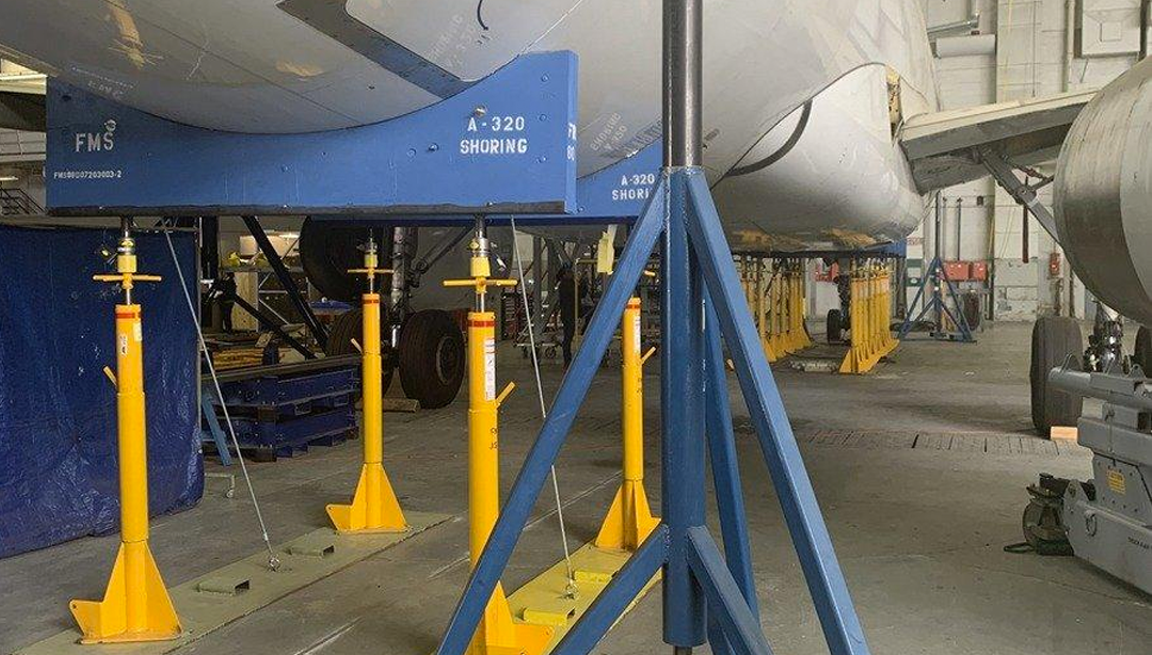
C Cubed Aerospace hopes to receive an FAA supplemental type certificate for its Airbus A320 passenger-to-freighter conversion by the end of 2020, and another following not too far behind for its A321 conversion. The timing could be good given changes in the cargo-conversion dynamic.
FMS, an MRO in Kansas City, is providing the touch labor and should complete the conversion that is underway by September, C Cubed MD Brian Sagi said. He expects the prototype conversion to take about 20,000 hours. Ground and flight tests will follow.
C Cubed is also developing an A321 passenger-to-freighter conversion that it hopes to bring to market six months after the A320, so mid-year 2021.
The A320 will hold 12 pallets on the main cargo deck and seven in the lower cargo hold, providing up to 50,700 lbs. (23 tonnes) of payload. The larger A321 will accommodate 15 pallets on the main deck and 10 on the lower, for a structural payload of up to 61,700 lbs. (28 tonnes).
The A320 and A321 conversions will feature the main cargo door in the same place and use the same parts, so they are basically the same conversion, but on different aircraft, said Sagi, who claimed competitors’ offerings do not have that commonality.
Two other companies offer A320 and A321 passenger-to-freighter conversions. EFW, a joint venture between Airbus and ST Engineering, offers a converted A320 with up to 48,280 lbs. of structural payload and an A321 with up to 62,500 lbs of payload. EFW’s A321 received an EASA STC in February.
321 Aircraft Solutions—a Precision Aircraft and ATSG venture—is also working on an A321-200 conversion that could hold up to 27 metric tons.
C Cubed expects demand for up to 500 of its A320 and A321 conversions over 20 years, although it has not yet announced a launch customer or any orders.
The COVID-19 pandemic has changed the equation for cargo conversions. On the demand side, e-commerce has increased, which lends itself to narrowbodies more than widebodies, and airlines are looking to diversify their revenue streams to include cargo—even by temporarily strapping cargo on or between seats during the pandemic when passengers are not flying.
“In January, we were at an all-time high for (aircraft) feedstock prices” due to strong passenger demand and the continued grounding of the Boeing 737 MAX, Sagi said. Now, with thousands of aircraft parked, many of which will probably not return to passenger revenue service, there is an abundance of feedstock so aircraft prices have dropped, making it a “perfect environment for the cargo conversion market,” he said.
For leasing companies owning mid-life aircraft that are not placed, they can decide to part them out or convert them, and “parts out have entered a weak market” so “the economic value of conversion is higher now and should continue to rise,” Sagi added.
Given these dynamics, he anticipates seeing an increased interest in C Cubed’s Airbus conversion options.





